Simultaneous Success Trajectories
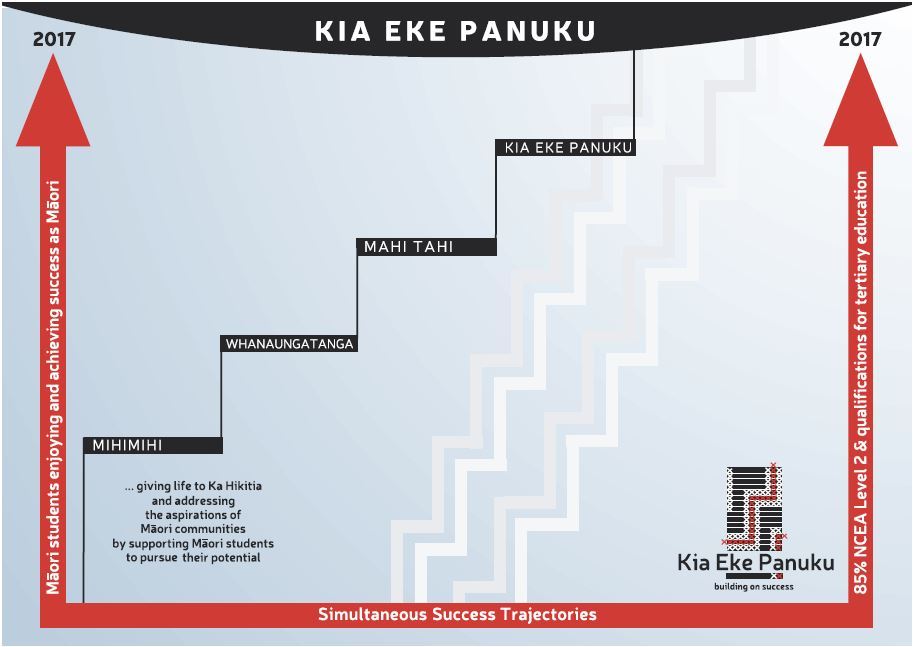
This relationship begins with mihimihi (introduce yourself) and whanaungatanga (make connections) as first steps toward mahi tahi (working together as one)
Mahi tahi seeks to address the aspirations of Māori communities and support Māori students to pursue their potential.
This kaupapa of Kia Eke Panuku and the Simultaneous Success Trajectories promote ‘a new way of being’ for schools and their Māori students. As schools work across the dimensions we are seeing positive change for leaders, teachers, students and their communities.


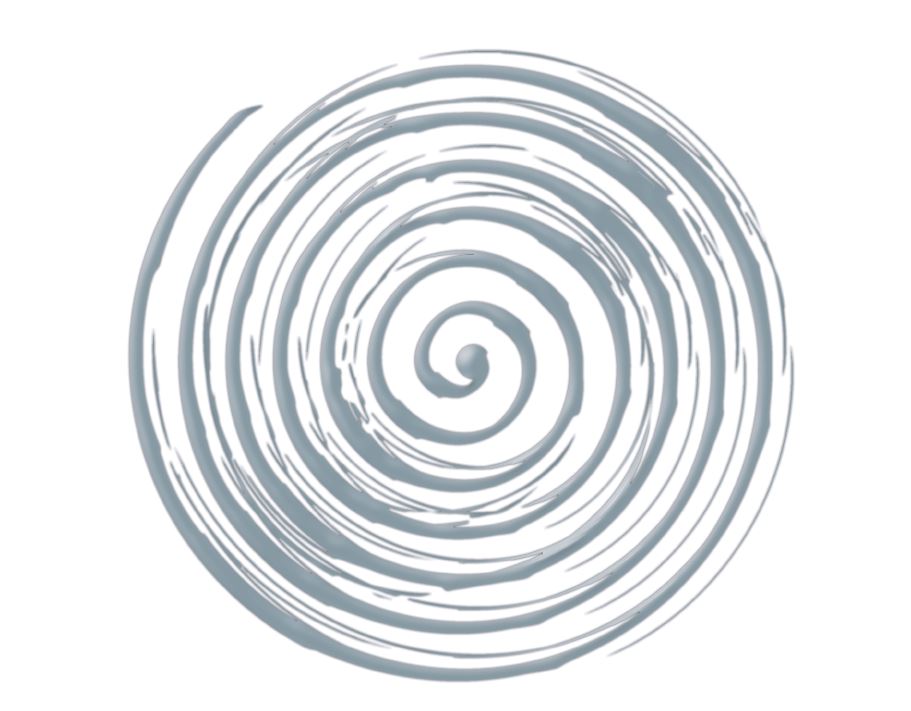 The spiraling koringoringo pattern represents the inter-relationships and interactions that form the essential cultural foundation for the mahi tahi framework.
The spiraling koringoringo pattern represents the inter-relationships and interactions that form the essential cultural foundation for the mahi tahi framework.
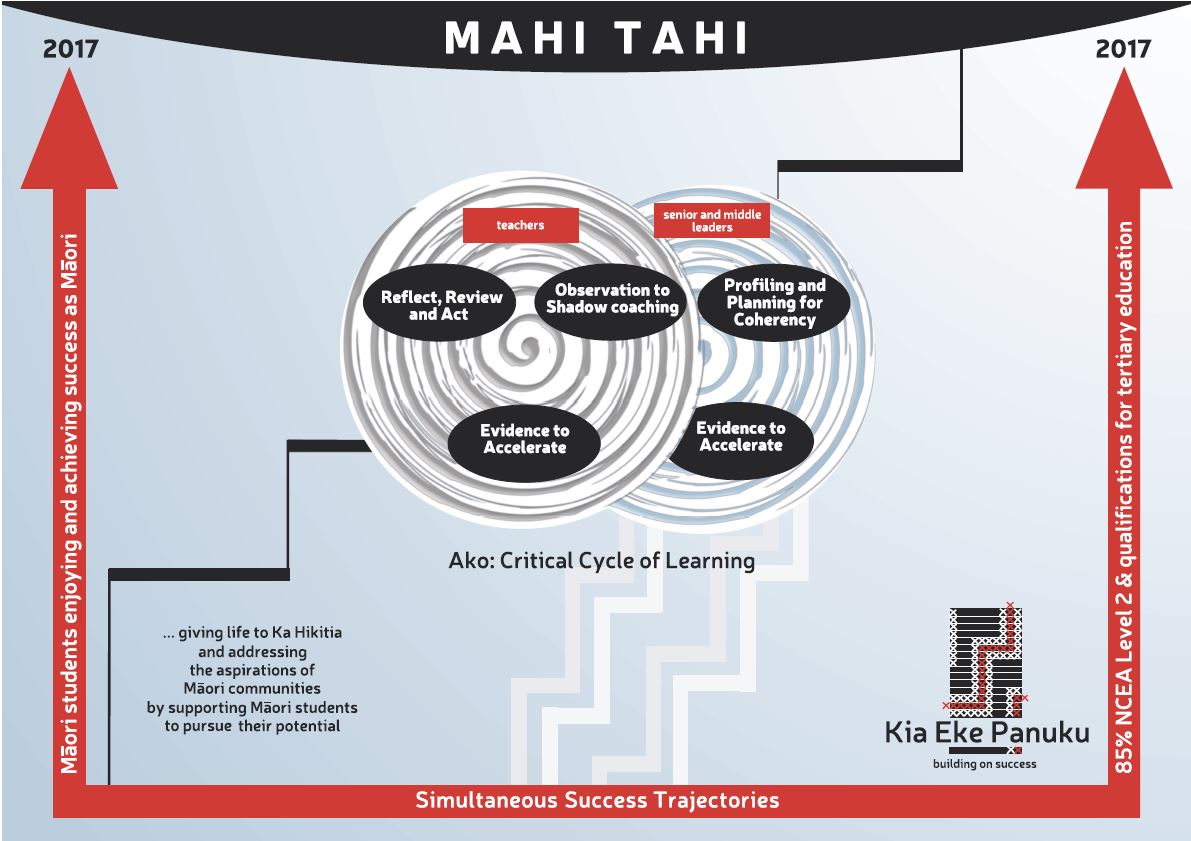 Mahi tahi operates at two levels, working with senior and middle leaders and working with teachers, all engaged with the Ako: Critical Cycle of Learning.
Mahi tahi operates at two levels, working with senior and middle leaders and working with teachers, all engaged with the Ako: Critical Cycle of Learning.
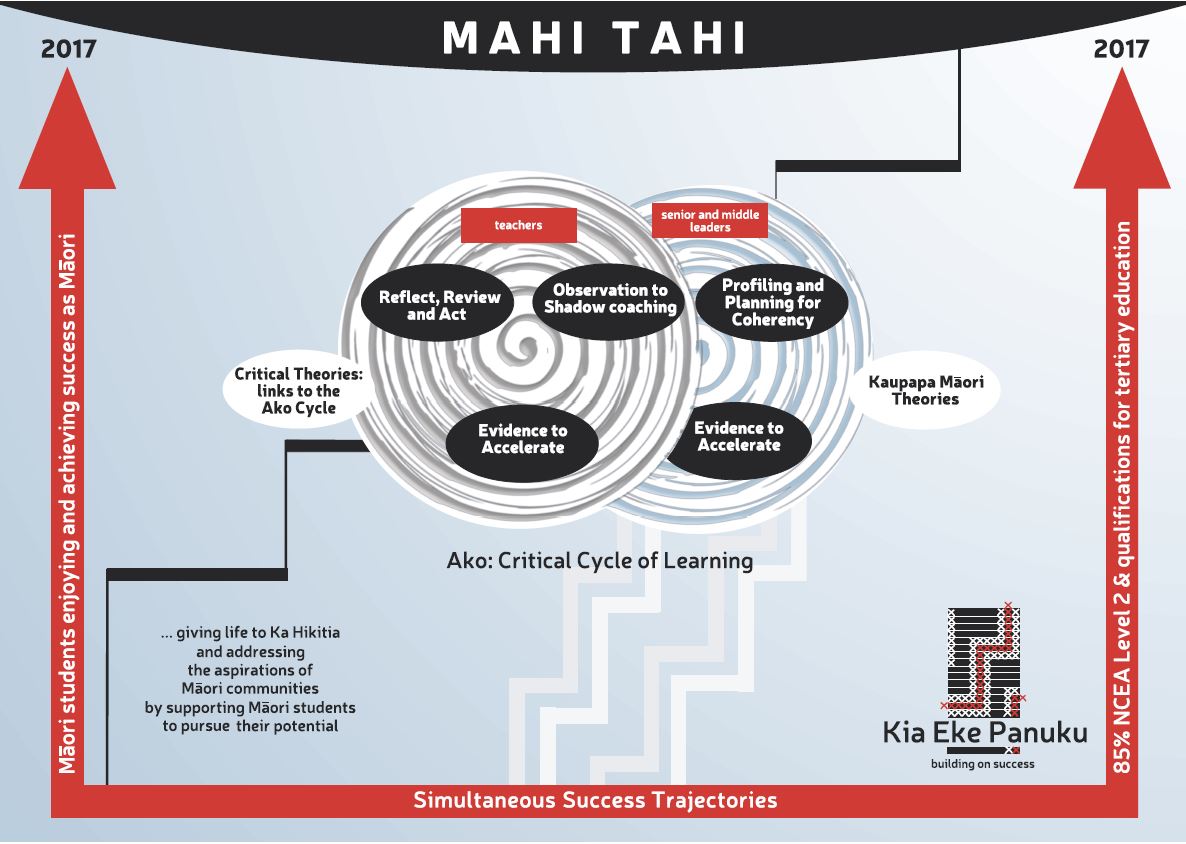 The Ako: Critical Cycle of Learning is informed by Kaupapa Māori and Critical Theories.
The Ako: Critical Cycle of Learning is informed by Kaupapa Māori and Critical Theories.
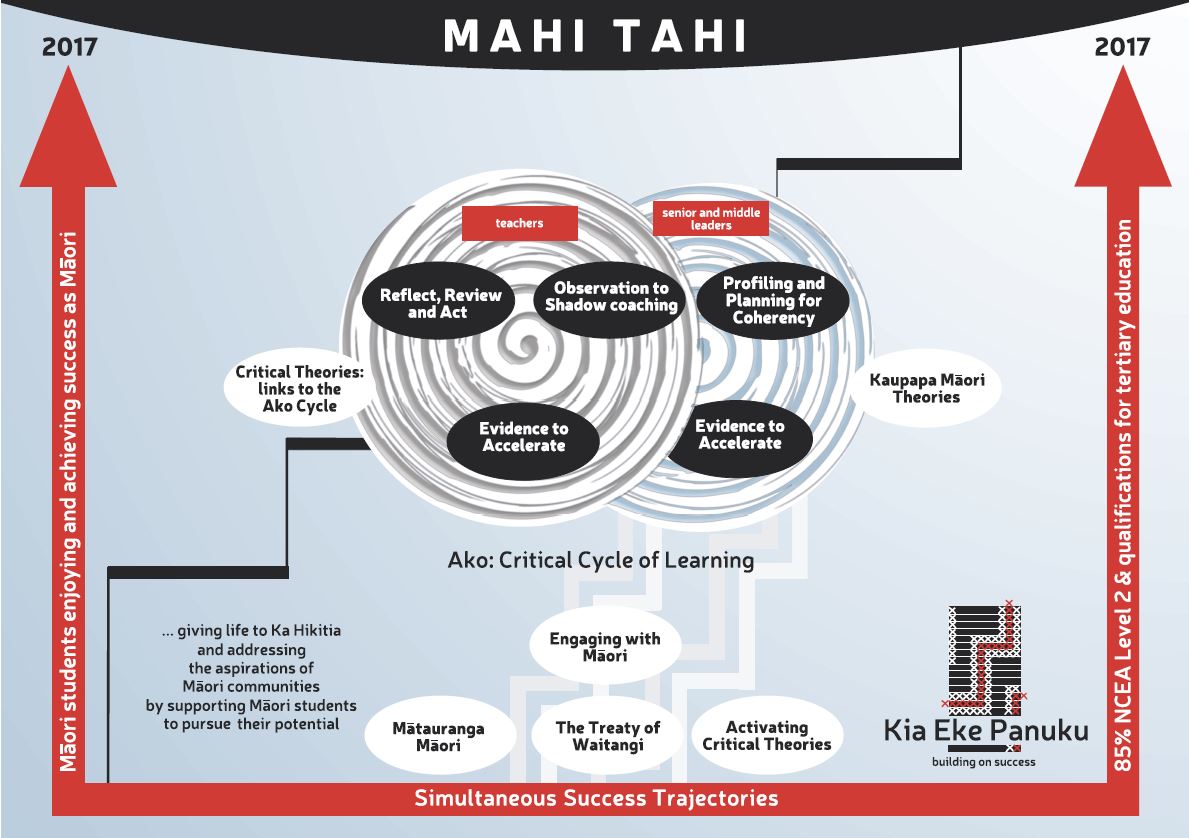 Kaupapa Māori involves theories of both resistance and self-determination.
Kaupapa Māori involves theories of both resistance and self-determination.
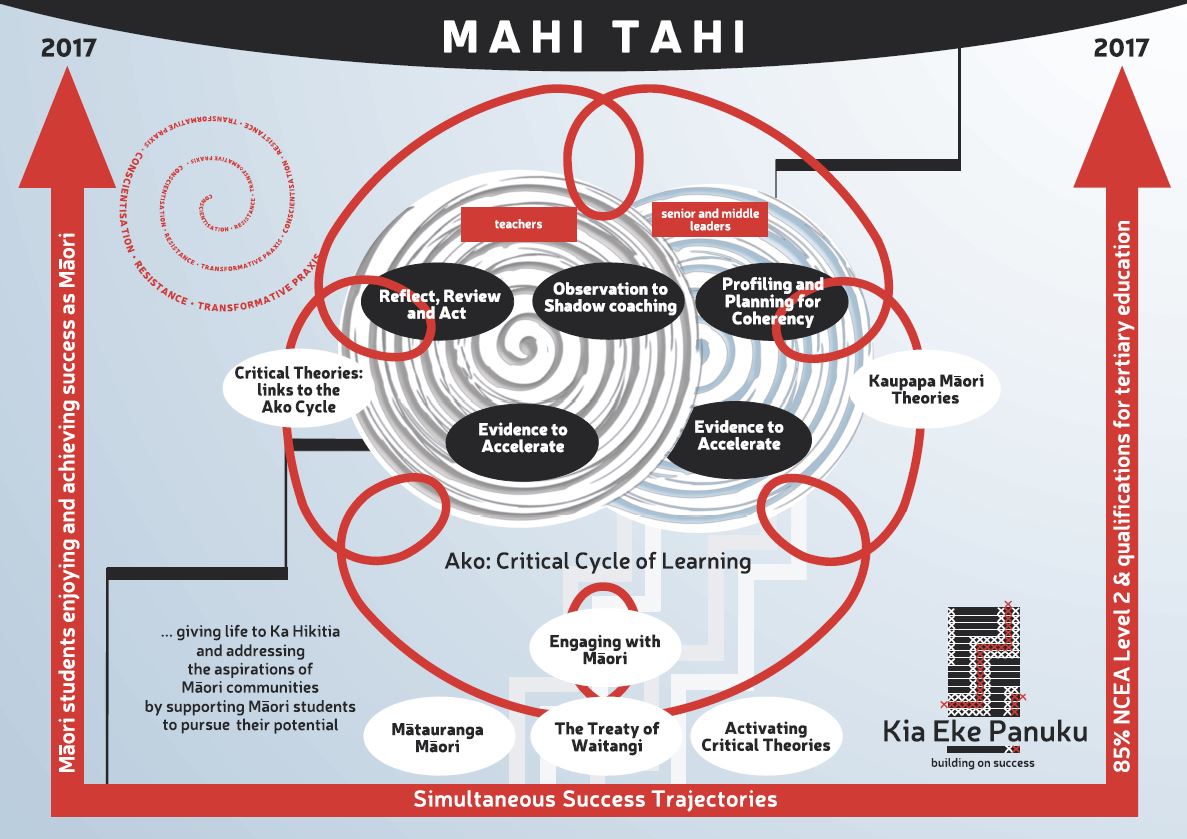 A feature of the Kia Eke Panuku mahi tahi is the critical questioning individuals engage in, either internally but increasingly with others.
A feature of the Kia Eke Panuku mahi tahi is the critical questioning individuals engage in, either internally but increasingly with others.
 The Kia Eke Panuku team provides support to the Strategic Change Leaders to effectively re-imagine their environment to effect the institutions of Kia Eke Panuku and realise the potential of their Action Plans to impact on Māori students' success.
The Kia Eke Panuku team provides support to the Strategic Change Leaders to effectively re-imagine their environment to effect the institutions of Kia Eke Panuku and realise the potential of their Action Plans to impact on Māori students' success.
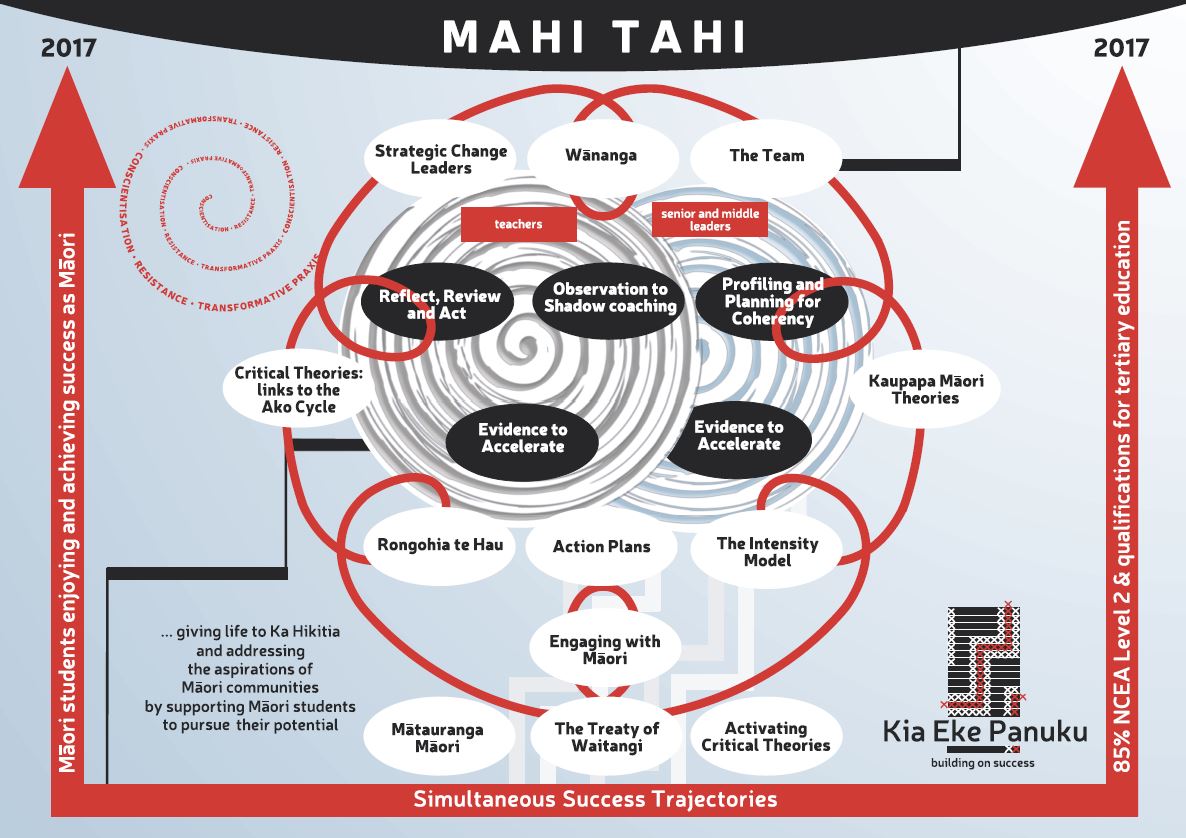 Schools begin their mahi in Kia Eke Panuku through a process of profiling that provides information for beginning their iterative Action Plan.
Schools begin their mahi in Kia Eke Panuku through a process of profiling that provides information for beginning their iterative Action Plan.